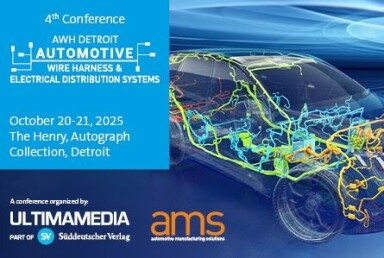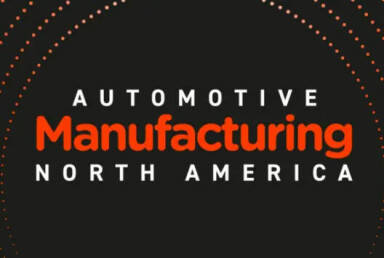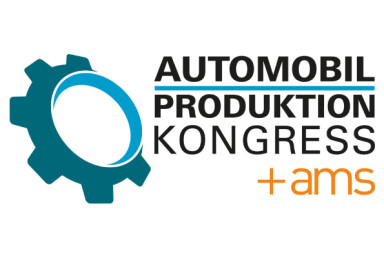Smart Factory: Bosch Mobility Americas
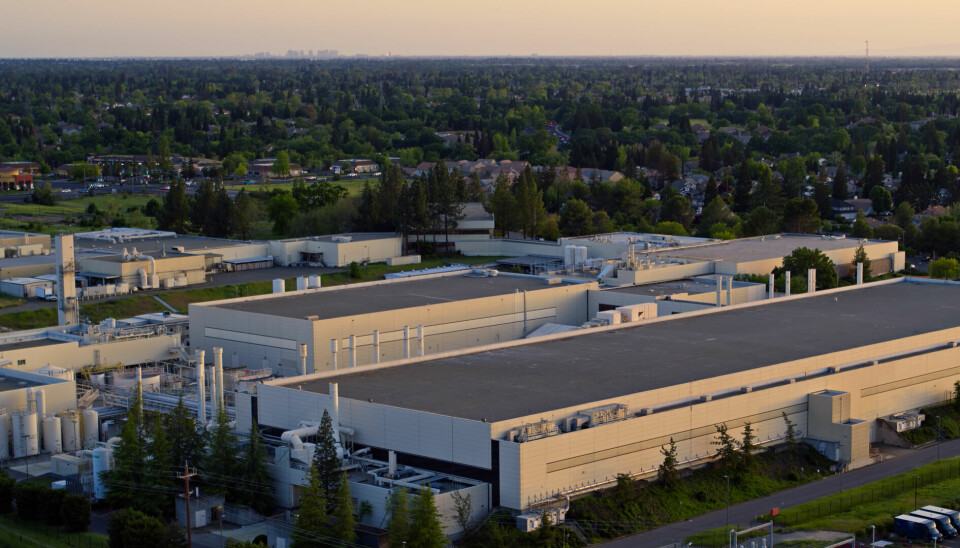
Bosch bolsters North American production through cross-functional collaboration
Ahead of speaking at the Automotive Manufacturing North America conference this October in Michigan, Bosch Mobility Americas’ top executive for operations, Dr Hanns Bernd Ketteler, explains how greater collaboration across departments, simultaneous engineering and digital tools are helping the automotive supplier stay competitive in fast-changing times.
For Dr Hanns Bernd Ketteler, collaboration between manufacturing and other divisions – including design, engineering, supply chain and finance – is not just a ‘nice-to-have’, general recommendation. Ketteler, executive vice-president of operations at Bosch Mobility Americas and responsible for a spread of functions including manufacturing and logistics, believes that the approach provides companies like Bosch with a competitive advantage.
For Ketteler, such integration, including co-located teams and sharing digital data, is critical to operational excellence, and helps production to keep up with shortening vehicle and product development cycles, fast changes in technology, markets and regulations.

“Cooperation between functions and between divisions is a very strong enabler of our objectives,” Ketteler explains, speaking to AMS in a livestream video interview focused on futureproofing manufacturing. “If we look into new product launches, we see that the earlier we bring teams together in multifunctional simultaneous engineering teams, and the better we share information, the faster we are and the fewer mistakes we make.”
Ketteler points to both cultural changes at the company – including a focus on more agile ways of working across functions – as well digitalisation and asset sharing as key enablers of this integration. He points to measures such as co-locating R&D teams and engineers at plants, aligning departmental targets and exchanging tooling and knowledge between locations.
Finding such measurable ways to improve efficiency, reduce waste and time to market are becoming imperatives for Bosch Mobility Americas, which has 15 manufacturing plants in North America, and covers products that range from electronics and semiconductors to technology for software-driven vehicles, assisted driving and electrified vehicles.
These business units have benefited from strong investment and growth in recent years, just as the market has seen increasing competition, supply chain disruption and rapid changes in product and software technologies. That has put strong pressure on manufacturing operations, which is only increasing in the face of uncertain regulations and policy, and rising volatility in the North American and global automotive market.
“Our major priority is, of course, to grow profitably,” Ketteler explains to AMS. “To achieve this, we must be excellent in every aspect of operations – across manufacturing and the entire supply chain. Operational excellence is a key focus area for us.”
Such improvements require a strong and consistent focus on skills and company culture, according to Ketteler. That is why training is such an important part of Bosch’s transformation across all employee levels, from collaborative processes to understanding AI.
“What we’ve learned is that talent development requires significant ongoing investment – whether we’re talking about operators, engineers, commercial staff or others,” he adds.
A need for stability – and operational excellence
Dr Hanns Bernd Ketteler, who has been in the role since January 2024 when the German company consolidated its automotive operations in the region into Bosch Mobility Americas, hopes for more tariff and regulatory certainty to help the company plan. Ketteler points to very high capital investment requirements in the automotive industry, as well as strong pressure on costs.
“The automotive industry is a highly competitive sector. Continuous performance improvements are absolutely key to stay in the game,” Ketteler says. That includes effective implementation of manufacturing equipment, including tooling and robotics, as well as investing in localisation of plants and suppliers to meet regional demand and requirements.
“Wherever we combine simultaneous engineering and application of digital means, we see significantly better performance
With the tariff and trade conditions for global trade with the US and the USMCA still unclear, Ketteler is hoping for more trade and regulatory certainty to support the company’s investment plans.
“Such capital investment needs a certain time to pay off,” he says. “So we need some clarity and stability in the requirements to ensure the return on investment.”
Speed, simultaneous engineering and networked data
Despite these challenges, Ketteler sees opportunities for the company to make significant productivity gains across operations. He is overseeing a strategic transformation which includes ramping up and integrating more localised operations in the US. He is also driving a rapid advance in digitalisation across manufacturing and operations, notably in the collection and analysis of data across locations, and growing applications for artificial intelligence, from supply chain visibility to error detection and predictive maintenance.
The sudden and uncertain shifts in trade policy are in some ways extensions of rapid changes confronting manufacturers. Ketteler points especially to compressed product cycles and technology shifts, including across North America.
“Everything is moving faster than it did in the past,” says Ketteler. “Speed has become a critical success factor – especially as new technologies enter the market and as industry dynamics continue to evolve.”
To keep pace, Bosch is continuously improving the way how it develops and launches new products.
At the heart of this effort is its focus on ‘simultaneous engineering’ – a model that combines product and process development from the outset and depends on intense collaboration between departments.
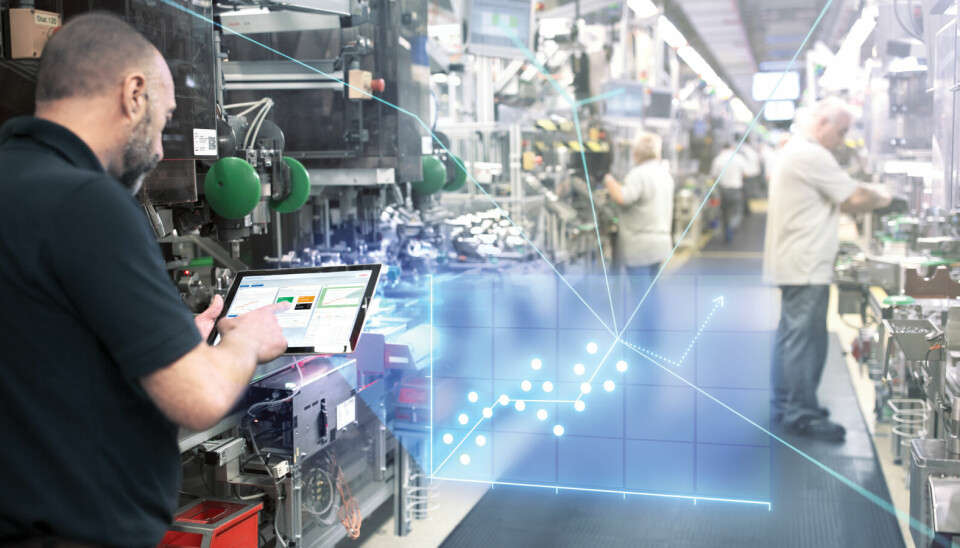
Technology and data sharing can foster such collaboration, including tools that support simultaneous engineering between R&D, manufacturing and even suppliers, adds Ketteler.
It is a process that requires a strong focus on digitalisation and shared data, so that teams can work across shared models and datasets.
“The wealth of data generated during a launch process, for example, is incredibly valuable when shared with the right stakeholders,” he says. “It provides clarity on where we stand and what needs to be done”.
“Wherever we combine simultaneous engineering and application of digital means, we see significantly better performance,” Ketteler adds.
Shared data visibility brings other benefits, including asset utilisation and allocation. Through improved networking of operations, Bosch can identify opportunities to reuse production assets between plants.
“That equipment may not always be available in the plant where a new launch is taking place, but we can reallocate it between locations,” Ketteler says, “if we can identify it in time. So once again, cooperation and networking are essential.”
For Ketteler, such integrated, cross-functional approaches to manufacturing are leading to significant and measurable productivity gains. On key performance indicators for new launches, for example, the company has seen dramatic improvements compared to previous launches.
“We analysed our performance with new product launches and found clear opportunities for improvement – for example, in reducing ramp-up time by reusing existing equipment,” he notes. “We’ve achieved reductions by 50% or even more in some cases.”
Culture shift: Shared targets and agile squads
However, collaboration does not automatically follow the implementation of tools or management directives; it also requires focus in company culture and leadership. That is why Bosch is adapting more agile methodologies to encourage integrated work patterns, including scrum teams and sprints, to boost speed and responsiveness. “These approaches help accelerate development and increase flexibility across our operations,” says Ketteler.
Now the use of big data is a real transformation. The second game changer is artificial intelligence.
Ketteler, whose career has spanned more than three decades at Robert Bosch in multifunctional leadership and manufacturing roles, views this collaboration as a leadership task. He aims both to lead by example, as well as to align team priorities and interactions.
“It sounds obvious, but every expert tends to focus on their own area,” he cautions. That is why Bosch is encouraging cross-functional learning through rotation programmes and co-location of R&D teams within plants.
Ketteler also recommends to align organisational structures and targets to avoid internal friction, for example ensuring that engineers and production teams don’t end up with goals that lead to opposing outcomes, for example in areas like reducing parts complexity. “Target-setting sounds simple, but it’s critical that people working in the same process don’t have conflicting objectives.”
Watch Dr Hanns Bernd Ketteler from Bosch Mobility Americas discuss in conversation with Christopher Ludwig on managing shorter development cycles and improving product launches in manufacturing.
AI and software change the game for production and skills
Ketteler points to advances in digitalisation as big opportunities to further improve operational performance, including across production, supply chain and other functions. “We’ve been active in what we call Industry 4.0 for many years,” says Ketteler. “Now the use of big data is a real transformation. The second game changer is artificial intelligence.”
Rather than relying solely on IT departments, Bosch is bringing together experts from across service and business domains. “We have highly qualified teams in both manufacturing and IT who work closely with our process experts. By combining their expertise and sharing insights from our data, we can achieve substantial improvements.”
Better visualisation and sharing of data can also help manufacturing to work better across teams, supporting faster responses and more resilient operations.
“Big data and artificial intelligence enable us to better anticipate changes or disruptions and to respond in a timely and appropriate way – not only in manufacturing, but across the business,” Ketteler says. “Sharing deep, real-time knowledge across functions helps teams make faster and better decisions, especially in volatile conditions.”
Training for a smarter, more collaborative future
Ultimately, Ketteler’s vision for strengthening and futureproofing Bosch’s operations in North America is built on four foundations: people, collaboration, digitalisation and financial strength. “I would always start with highly qualified associates in all functions, which will remain absolutely key despite all digitalisation and artificial intelligence.”
Along smart factory applications, digitalisation and software in Bosch products are also influencing the very nature of manufacturing roles. Bosch operations staff must manage embedded software in components, as well as oversee software verification and updates across manufacturing and supply chain operations.
“This requires a new level of knowledge and a much deeper understanding of the production software landscape,” he says.
To equip staff with these skills, Bosch is investing not just in technical training but also in changing its internal culture. “For many people, this is a whole new world, and some may even be a little apprehensive,” Ketteler acknowledges. “So, it’s important that they understand the opportunities in digitalisation and AI, and why data is so critical for our success.”
He further emphasises the importance of teamwork and cross-functional collaboration across the development cycle. Combined with the intensive use of data and AI, he believes that Bosch can benefit from remarkable improvements and efficiency across its operations, with direct benefits to the bottom line.
“After all, we cannot forget about financial health. We need to earn the money that enable us to invest in the future.”




